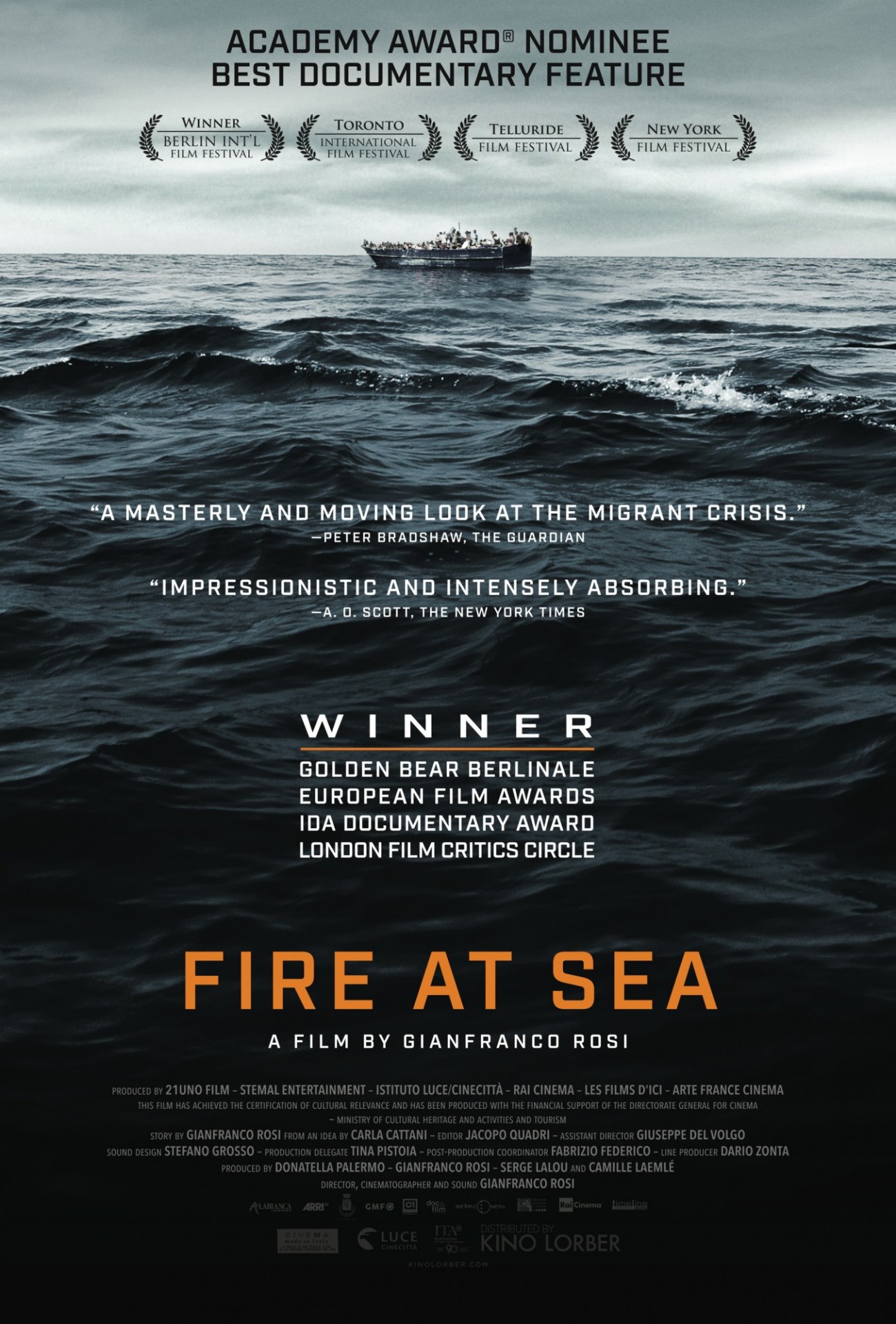Fire at Sea (2016): Film Critique

Film Review by Gabriella Kassel-Torres
A gorgeous cinematic experience, Fire At Sea captures life on the Italian island of Lampedusa during the refugee crisis. The film opens with a reporting of the number of stranded refugees along with casualties. It then juxtaposes these alarming numbers with beautiful images of the Lampedusa landscape. The story follows a boy and his companion who make firecrackers and slingshots, a grandmother who tells stories about wartime when she grew up to her grandson, a radio DJ who takes music requests, an elderly couple and their daily routine, a doctor who brings the dead and injured refugees to the hospital and examines the death toll, and of course the incoming refugees. I really enjoyed how we were able to see life through the different lenses of these seemingly ordinary people. Another trait of the film I really enjoyed was its ability to give dignity to the refugees. The scenes of refugees playing football was really moving as it gave us a sense of their way of coping with the traumatic events. A scene I thought was powerful was when the elderly woman is cooking and listening to the radio when it is announced that 250 refugees are missing after two boats sank. Her response to the report is “poor souls”, and then she carries on with cooking. This scene illustrates how people are quick to move on and go about their days, even when tragedy strikes.
Another trait of the film I really enjoyed was its ability to give dignity to the refugees.
Another scene I liked was when the refugees pray and hum. This scene is mesmerizing, and I feel is able to move and have the audience connect with the refugees. That scene coupled with the examination/vetting process that takes place. A woman with a headdress is asked to remove it but she only wants to move it up slightly. This conflict of views among the muslims and non-muslims is what we see currently all around the world. The last scene I found really powerful is when the doctor is examining the injuries and casualties of the sunken boats, detailing the class of the boat being first ($1500), second ($1000), and third ($800). He says he sees so many of these cadavers, but he can never get over the heartbreaking deaths of women, mothers, pregnant women, and children. One thing I sort of disliked about the film was the fact that it felt slow at times–other than that, it is really hard to pick out anything else I disliked.
People are quick to move on and go about their days, even when tragedy strikes.
Overall, I believe this film was trying to accomplish the idea of the refugee crisis existing and it being a really difficult problem. It can be seen as an emotional plea to other countries who may deny or turn away refugees, to take in as many as they can. Taking in refugees is only a short term solution to the social and political problems of this world. I believe it is important that we get to the root of the causes of the refugee crisis and discuss solutions.
